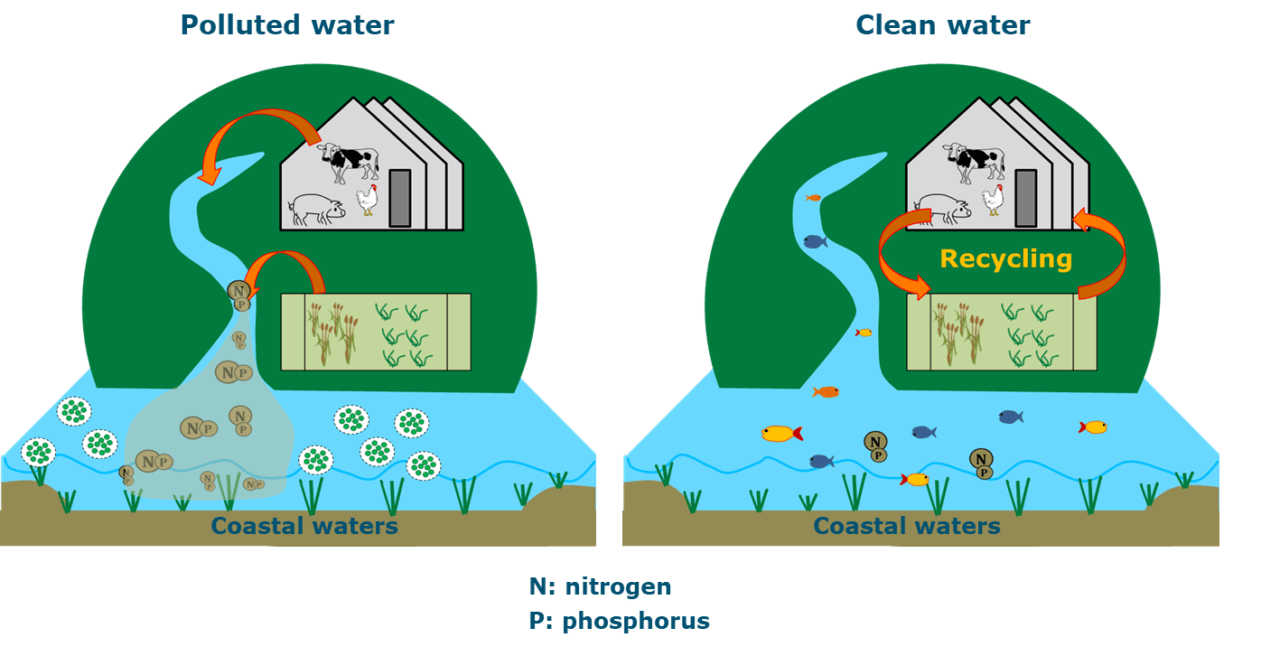Sep 23, 2021 | Brazil, China, Data and Methods, Energy & Climate, India, Russia, Science and Policy, Young Scientists
By Neema Tavakolian, 2021 IIASA Science Communication Fellow
Ever wonder why countries can never agree on issues related to climate change and the environment? Young Scientists Summer Program (YSSP) participant Felix Schenuit dives into the politics and challenges surrounding carbon dioxide removal in international climate negotiations.
The Paris Agreement has been lauded as a landmark effort to address climate change and has been signed by nearly every country in the world. The agreement sets out ambitious goals such as reaching temperature targets, setting net-zero carbon targets, and providing financial, technical, and capacity building support to those countries that need it.
One topic that has been receiving increasing attention since the adoption of the agreement is carbon dioxide removal, or CDR – which comprises man made processes involving the direct removal of carbon dioxide from the atmosphere and sequestering it somewhere else, usually underground or under the sea floor. Since it was first proposed, CDR has been discussed on many platforms including critical comments, journals, and studies. 2021 IIASA YSSP participant Felix Schenuit studies how the debate, which has been largely ignored by policymakers until the Paris Agreement, is evolving, and how CDR is being taken up in climate policymaking.

© Felix Schenuit
Felix Schenuit comes from a background of political science and public policy. It was during his employment at the German Institute for International and Security Affairs (SWP) that he became fascinated by CDR and the political debates surrounding the impacts it can have on the fight against climate change. This is when he decided to combine his newfound interest with his background and experiences in international relations and public policy to pursue a PhD at the University of Hamburg comparing CDR policymaking in different countries and the role scientific knowledge has on its implementation.
Building on a previous study comparing CDR governance among nine Organisation for Economic Co-operation and Development (OECD) cases, Schenuit is now focusing on the role of scientific knowledge surrounding CDR in Brazil, China, India, and Russia. These countries account for a significant portion of the world’s greenhouse gas emissions due to their rapid industrialization and expanding economies. China and India are especially significant due to their great influence in ongoing international climate negotiations regarding the Paris Agreement.
Schenuit uses integrated assessment models to gather information and data about the role of CDR in different countries in decarbonization pathways.
“These models help us to understand what amount of CDR we are likely to need to achieve Paris Agreement targets. Case studies on specific countries are an important second step to explore facts on the ground about different policy initiatives, emerging CDR facilities, and efforts in each region. We reach out to country experts and build interdisciplinary bridges to investigate how CDR is addressed politically, what amounts are available and politically feasible, as well as relevant knowledge gaps,” he explains.
One of the biggest challenges remaining for CDR is limited knowledge about different CDR methods, both in science and policy circles. There are many ways one can remove carbon dioxide from the atmosphere, ranging from afforestation, to soil carbon sequestration, ocean fertilization, direct CO2 capture from the air, and the use of biochar, among others.

Reforestation on hill at Bao Loc mountain pass, Vietnam © Hoxuanhuong | Dreamstime.com
“When it comes to methods, many policymakers are unaware of the portfolio of available methods. Each method has different tradeoffs, both environmentally and politically. For example, in Germany, carbon capture and storage (CCS) is very contested and most policymakers are hesitant to even address CDR. Thus, in Germany one may need a different set of methods than in the UK, for example, where CCS-based CDR methods are pursued proactively,” Schenuit says.
Many predict that the role of international politics in CDR governance under the Paris Agreement is going to be difficult and tricky to navigate. Schenuit argues that it is still a bit too early in the debate for predictions as policymakers have only recently been directly addressing CDR. He does however agree that there is already strong evidence of politics at play and alliances are forming.
The study on Brazil, China, India, and Russia will yield fascinating results, as it will give us an idea about future disputes and questions regarding the carbon in our atmosphere. Questions like where we will be removing carbon and who is going to pay for it. One thing is for certain, however. Time is running out to meet the targets of the Paris Agreement, and international cooperation is desperately needed.
Note: This article gives the views of the author, and not the position of the Nexus blog, nor of the International Institute for Applied Systems Analysis.
Nov 10, 2020 | Air Pollution, China, Climate Change, Energy & Climate, Young Scientists
By Xu Wang, IIASA Young Scientists Summer Program (YSSP) alumnus and Assistant Professor at Beijing University of Technology and Pallav Purohit, researcher in the IIASA Air Quality and Greenhouse Gases Program.
Xu Wang and Pallav Purohit write about their recent study in which they found that accelerating the transition to climate-friendly and energy-efficient air conditioning in the Chinese residential building sector could expedite building a low-carbon society in China.

© Shao-chun Wang | Dreamstime.com
China saw the fastest growth worldwide in energy demand for space cooling in buildings over the last two decades, increasing at 13% per year since 2000 and reaching nearly 400 terawatt-hours (TWh) of electricity consumption in 2017. This growth was largely driven by increasing income and growing demand for thermal comfort. As a result, space cooling accounted for more than 10% of total electricity growth in China since 2010 and around 16% of peak electricity load in 2017. That share can reach as much as 50% of peak electricity demand on extremely hot days, as seen in recent summers. Cooling-related carbon dioxide (CO2) emissions from electricity consumption consequently increased fivefold between 2000 and 2017, given the strong reliance on coal-fired power generation in China [1].
In our recent publication in the journal Environmental Science and Technology, we used a bottom-up modeling approach to predict the penetration rate of room air conditioners in the residential building sector of China at the provincial level, taking urban-rural heterogeneity into account. Our results reveal that increasing income, growing demand for thermal comfort, and warmer climatic conditions, could drive an increase in the stock of room air conditioners in China from 568 million units in 2015 to 997 million units in 2030, and 1.1 billion units in 2050. In urban China, room air conditioner ownership per 100 households is expected to increase from 114 units in 2015 to 219 units in 2030, and 225 units in 2050, with slow growth after 2040 due to the saturation of room air conditioners in the country’s urban households. Ownership of room air conditioners per 100 households in rural China could increase from 48 units in 2015 to 147 units in 2030 and 208 units in 2050 [2].
The Kigali Amendment to the Montreal Protocol on Substances that Deplete the Ozone Layer will help protect the climate by phasing down high global warming potential (GWP) hydrofluorocarbons (HFCs), which are commonly used as refrigerants in cooling technologies [3]. Promoting energy efficiency of cooling technologies together with HFC phase-down under the amendment can significantly increase those climate co-benefits. It is in this context that we assessed the co-benefits associated with enhanced energy efficiency improvement of room air conditioners (e.g., using efficient compressors, heat exchangers, valves, etc.) and the adoption of low-GWP refrigerants in air conditioning systems. The annual electricity saving from switching to more efficient room air conditioners using low-GWP refrigerants is estimated at almost 1000 TWh in 2050 when taking account of the full technical energy efficiency potential. This is equivalent to approximately 4% of the expected total energy consumption in the Chinese building sector in 2050, or the avoidance of 284 new coal-fired power plants of 500 MW each.
Our results indicate that the cumulative greenhouse gas mitigation associated with both the electricity savings and the substitution of high-GWP refrigerants makes up 2.6% of total business-as-usual CO2 equivalent emissions in China over the period 2020 to 2050. Therefore, the transition towards the uptake of low-GWP refrigerants is as vital as the energy efficiency improvement of new room air conditioners, which can help and accelerate the ultimate objective of building a low-carbon society in China. The findings further show that reduced electricity consumption could mean lower air pollution emissions in the power sector, estimated at about 8.8% for sulfur dioxide (SO2), 9.4% for nitrogen oxides (NOx), and 9% for fine particulate matter (PM2.5) emissions by 2050 compared with a pre-Kigali baseline.
China can deliver significant energy savings and associated reductions in greenhouse gas and air pollution emissions in the building sector by developing and implementing a comprehensive national policy framework, including legislation and regulation, information programs, and incentives for industry. Energy efficiency and refrigerant standards for room air conditioning systems should be an integral part of such a framework. Training and awareness raising can also ensure proper installation, operation, and maintenance of air conditioning equipment and systems, and mandatory good practice with leakage control of the refrigerant during the use and end-of-life recovery. Improved data collection, research, and cooperation with manufacturers can equally help to identify emerging trends, technology needs, and energy efficiency opportunities that enable sustainable cooling.
References:
[1] IEA (2019). The Future of Cooling in China: Delivering on Action Plans for Sustainable Air Conditioning, International Energy agency (IEA), Paris.
[2] Wang X, Purohit P, Höglund Isaksson L, Zhang S, Fang H (2020). Co-benefits of energy-efficient air conditioners in the residential building sector of China, Environmental Science & Technology, 54 (20): 13217–13227 [pure.iiasa.ac.at/16823]
[3] Purohit P, Höglund-Isaksson L, Dulac J, Shah N, Wei M, Rafaj P, Schöpp W (2020). Electricity savings and greenhouse gas emission reductions from global phase-down of hydrofluorocarbons, Atmospheric Chemistry and Physics, 20 (19): 11305-11327 [pure.iiasa.ac.at/16768]
Note: This article gives the views of the author, and not the position of the Nexus blog, nor of the International Institute for Applied Systems Analysis (IIASA).
Feb 14, 2020 | China, Environment, Food & Water, Water, Women in Science
By Maryna Strokal, Department of Environmental Sciences, Water Systems and Global Change, Wageningen University and Research, The Netherlands
Maryna Strokal discusses a new integrated approach to finding cost-effective solutions for nutrient pollution and coastal eutrophication developed with IIASA colleagues.

© Huy Thoai | Dreamstime.com
Have you ever wondered why the water in some rivers appear to be green? The green tinge you see is due to eutrophication, which means that too many nutrients – specifically nitrogen and phosphorus – are present in the water. This happens because rivers receive these nutrients from various land-based activities like run-off from agricultural fields and sewage effluents from cities. Rivers in turn export many of these nutrients to coastal waters, where it serves as food for algae. Too many nutrients, however, cause the algae and their blooms to grow more than normal. Because algae consumes a lot of oxygen, this lowers the available oxygen supply in the water, killing off fish and other marine life. Some algae can also be toxic to people when they eat seafood that have been exposed to, or fed on it. Polluted river water on the other hand, is unfit for direct use as drinking water, or for cooking, showering, or any of our other daily needs. Before we can use this water, it needs to be treated, which of course costs money.
To better understand and address these issues, I worked with colleagues from IIASA, Wageningen University, and China to develop an integrated approach to identify cost-effective solutions (read cheapest) to reduce river pollution and thus coastal eutrophication. Our integrated approach takes into account human activities on land, land use, the economy, the climate, and hydrology. We implemented the new approach for the Yangtze Basin in China.
The Yangtze is the third longest river in the world and exports nutrients from ten sub-basins to the East China Sea, where the coast often experiences severe eutrophication problems that may increase in the coming years. The Chinese government has called for effective actions to ensure clean water for both people and nature.
In our paper on this work, which was recently published in the journal Resources, Conservation, and Recycling, my colleagues and I conclude that reducing more than 80% of nutrient pollution in the Yangtze will cost US$ 1–3 billion in 2050. This cost might seem high, but it is actually far below 10% of the income level in the Yangtze basin. We also identified an opportunity in the negative or zero cost range, which would result in a below 80% reduction in nutrient export by the Yangtze. This negative or zero cost alternative involves options to recycle manure on land and reduce the use of chemical fertilizers (Figure 1). More recycling means that farmers will buy less chemical fertilizers and potential savings can then compensate for the expenses related to recycling the manure. We also illustrated the costs that would be involved for ten sub-basins to reduce their nutrient export to coastal waters.

Figure 1. Summarized illustration of eutrophication causes and cost-effective solutions for reducing nutrient export by Yangtze and thus coastal eutrophication in the East China Sea in 2050.
Recycling manure on cropland is an important and cost-effective solution for agriculture in the sub-basins of the Yangtze River (Figure 1). Manure is rich in the nutrients that crops need, and opting for this alternative instead of chemical fertilizers avoids loss of nutrients to rivers, and thus ultimately to coastal waters. Current practices are however still far from ideal, with manure – and especially liquid manure – often being discharged into water because crop and livestock farms are far away from each other, which makes it practically and economically difficult to transport manure to where it is needed. Another reason is the historical practice of farmers using chemical fertilizers on their crops – it is simply how they are used to doing things. Unfortunately, the amounts of fertilizers that farmers apply are often far above what crops actually need, thus leading to river pollution.
The Chinese government are investing in combining crop and livestock production, in other words, they are creating an agricultural sector where crops are used to feed animals and manure from the animals is in turn used to fertilize crops. Chinese scientists are working with farmers to implement these solutions.
In our paper, we showed that these solutions are not only sustainable, but also cost-effective in terms of avoiding coastal eutrophication. We invite you to read our paper for more details.
References
Strokal M, Kahil T, Wada Y, Albiac J, Bai Z, Ermolieva T, Langan S, Ma L, et al. (2020). Cost-effective management of coastal eutrophication: A case study for the Yangtze River basin. Resources, Conservation and Recycling 154: e104635. https://doi.org/10.1016/j.resconrec.2019.104635.
Note: This article gives the views of the author, and not the position of the Nexus blog, nor of the International Institute for Applied Systems Analysis.
Jul 22, 2019 | Air Pollution, China, India, Women in Science
By Shonali Pachauri, Senior Researcher in the IIASA Energy Program
Shonali Pachauri explains why data, indicators, and monitoring at finer scales are important to ensure that everyone benefits from policies and efforts aimed at achieving national and global development goals.
A world where no one is left behind by 2030, is the promise nations have made by adopting the United Nations’ Agenda for Sustainable Development. But how does one ensure that no one is left behind? It requires designing inclusive policies and programs that target the most vulnerable and marginalized regions and populations. Sound data and indicators underpin our current understanding of the status of development and are an important part of periodic reviews to determine the direction and pace of progress towards achieving agreed goals. These form the basis of informed decisions and evidence-based policymaking. While an exhaustive list of indicators has been prescribed to monitor progress towards the globally agreed goals, these have been largely defined at a national scale. These goals rely overwhelmingly on simple averages and aggregates that mask underlying variations and distributions.

Indian woman walking home with fire wood © Devy | Dreamstime.com
Recent work I’ve been involved in makes the pitfalls of working with averages and aggregates alone abundantly clear. They can obscure uneven patterns of changes and impacts across regions and groups within the same nation. The overall conclusion of this work is that, even if the globally agreed goals are met by 2030, this is no guarantee that everyone will benefit from their achievement.
A recent Nature Energy – News & Views piece I was invited to write reports on a study that assessed the impacts of China’s recent coal to electricity program across villages in the Beijing municipal region. The program subsidizes electricity and electric heat pumps and has been rolling out a ban on coal use for household heating. The study found that the benefits of the program to home comfort, air quality, and wellbeing varied significantly across rich and poor districts. In poor districts, the study found that the ban was not effective as poor households were still unable to afford the more expensive electric heating and were continuing to rely on coal. Studies such as this one that help us understand how and why benefits of a program may vary across regions or population groups can aid policy- and decision makers in formulating more fair and inclusive policies.
In other recent research carried out with colleagues in the IIASA Energy Program, the Future Energy Program at the Fondazione Eni Enrico Mattei (FEEM) in Italy, and the Institute for Integrated Energy Systems at the University of Victoria, Canada, we developed a detailed satellite nightlights derived dataset to track progress with providing electricity access at a sub-national level in Africa. We found that while progress with electrification between 2014 and 2018 varied across nations, at a sub-national provincial level, disparities were even more pronounced. Even more surprising, while electricity access is generally higher and easier to extend in urban areas, we found urban pockets where access has stagnated or even worsened. This correlated with areas where in-migration of populations had been high. These areas likely include urban slums or peri-urban regions where expanding electricity access continues to be challenging. Furthermore, our analysis shows that even where access has been extended, there are regions where electricity use remains extremely low, which means that people are not really benefitting from the services electricity can provide.
In a final example, of research carried out with collaborators from the University of British Columbia and the Stockholm Environment Institute, we evaluated a large nationwide program to promote cooking with liquefied petroleum gas (LPG) in Indian households to induce a shift away from the use of polluting solid fuels. While this program specifically targets poor and deprived, largely rural households, our assessment found that although there has been an unprecedented increase in enrollments of new LPG customers under the program, this has not been matched by an equal increase in LPG sales. In fact, we found consumption of LPG by program beneficiaries was about half that of the average rural consumer. Moreover, when we examined how purchases were distributed across all new consumers, we found that about 35% of program beneficiaries purchased no refills during the first year and only 7% bought enough to substitute half or more of their total cooking energy needs with LPG. Clearly, the health and welfare benefits of a transition to cleaner cooking are still to be realized for most people covered by this program.
Analyses, such as the examples I’ve discussed here, clearly highlight that we need data, indicators, and monitoring at much finer scales to really assess if all regions and populations are benefitting from policies and efforts to achieve national and globally agreed development goals. Relying on aggregates and averages alone may paint a picture that hides more than it reveals. Thus, without such finer-scale analysis and an understanding of the distributional impacts of policies and programs, we may end up worsening inequalities and leaving many behind.
References:
[1] Pachauri S (2019). Varying impacts of China’s coal ban. Nature Energy 4: 356-357. [pure.iiasa.ac.at/15905]
[2] Falchetta G, Pachauri S, Parkinson S, & Byers E (2019). A high-resolution gridded dataset to assess electrification in sub-Saharan Africa. Scientific Data 6 (1): art. 110. [pure.iiasa.ac.at/15982]
[3] Kar A, Pachauri S, Bailis R, & Zerriffi H (2019). Using sales data to assess cooking gas adoption and the impact of India’s Ujjwala program in rural Karnataka. Nature Energy [pure.iiasa.ac.at/15994]
Note: This article gives the views of the author, and not the position of the Nexus blog, nor of the International Institute for Applied Systems Analysis.
Apr 12, 2019 | Alumni, China, Climate, Women in Science, Young Scientists
By Kejia Hu, PhD Candidate at Zhejiang University, China and IIASA Young Scientists Summer Program (YSSP) 2016 participant
Kejia Hu, an alumna of the IIASA Young Scientists Summer Program, discusses a recent study on how extreme temperatures affect the health risks experienced by urban and rural communities in China.
Hot and cold temperatures are associated with increased risks of cause-specific mortality, in other words, deaths that result from, for instance, cardiovascular and respiratory conditions. Due to the urban heat island effect – where an urban heat island is a city or metropolitan area that is significantly warmer than its surrounding rural areas due to human activity – it is commonly assumed that urban residents are at a higher risk of exposure to extreme heat than their rural neighbors are. Very few studies have explored the urban-rural differences of temperature-related health risks, often because of the lack of sufficient meteorological and health data in rural areas.
Today, 45% of the global population – nearly 3.4 billion people – still live in rural regions, and based on the UN’s World Urbanization Prospects 2018, there will still be more than 3 billion people living in these areas by 2050, despite current trends such as urbanization.
This made us wonder whether there could be a rural-urban gap in extreme temperature induced health risk. We decided to conduct a study to address this question in Zhejiang province in eastern China employing high spatial resolution data on temperature, death registrations, air pollution, and population density across 89 counties in Zhejiang from 2009 to 2015.
Based on an epidemiological analysis of more than 2 million death cases, we found that rural residents are more sensitive to both cold and hot temperatures than urban residents, and that extreme temperatures especially affect the elderly. Our results indicate that extreme cold temperatures increased the mortality rate by 98% for rural populations, and by 47% for urban populations, while extremely hot temperatures increased the mortality rate by 18% for rural populations and by 14% for urban populations. When considering both human exposure and vulnerability, the attributable deaths from cold and hot temperatures were 4.8 and 2.6 times higher in rural than in urban areas, respectively.

© Elwynn | Dreamstime.com
But why do rural populations tend to have higher mortality risks in the face of both cold and heat? Our results suggest that age, education, income, access to health care services and air conditioners, and the types of occupations that residents in these areas engage in, are among the potential sources. We found that counties with higher percentages of elderly and agricultural employment, lower levels of education, lower income levels, fewer hospital beds, and fewer air conditioners, had higher mortality risks related to both heat and cold. This could mean that socioeconomic vulnerability may play an important role – even more important than temperature in the determinants of temperature-related health risks.
Ours is the first study to find an urban–rural disparity in both heat and cold mortality risks. Importantly, it challenges the general assumption in previous studies in developed countries that urban residents are at a higher risk to extreme high temperatures. Our findings suggest that previous studies, which mostly investigated exposure-response associations using data from urban areas, may have underestimated the mortality burden for the entire population.
Although the Chinese government have standards in place regarding thermal comfort in residential buildings and highly recommend that they are implemented for rural houses, unfortunately, until now, this has only been enforced for urban apartments in China. In addition, due to lower income, rural households are more likely to fall into “fuel poverty” compared to urban households, which will limit the use of air conditioners for rural people. Targeted measures such as financial assistance for paying electricity bills will help build rural residents’ resilience to extreme temperatures.
Our findings have important implications for policy, particularly in developing countries. Overall, no single action will be enough to reduce the temperature-related mortality risks in rural areas. More efforts should be made to narrow the urban-rural gaps that persist in access to health care by, for example, increasing investment in health care facilities and health care professionals in rural areas. Improving rural people’s general awareness of temperature related risks, such as to popularize preventive knowledge and to develop early warning systems is also needed to prevent temperature-related deaths.
Reference:
Hu K, Guo Y, Hochrainer-Stigler S, Liu W, See L, Yang X, Zhong J, Fei F, et al. (2019). Evidence for Urban–Rural Disparity in Temperature–Mortality Relationships in Zhejiang Province, China. Environmental Health Perspectives 127 (3): e037001. [pure.iiasa.ac.at/15773]
Note: This article gives the views of the author, and not the position of the Nexus blog, nor of the International Institute for Applied Systems Analysis.








You must be logged in to post a comment.